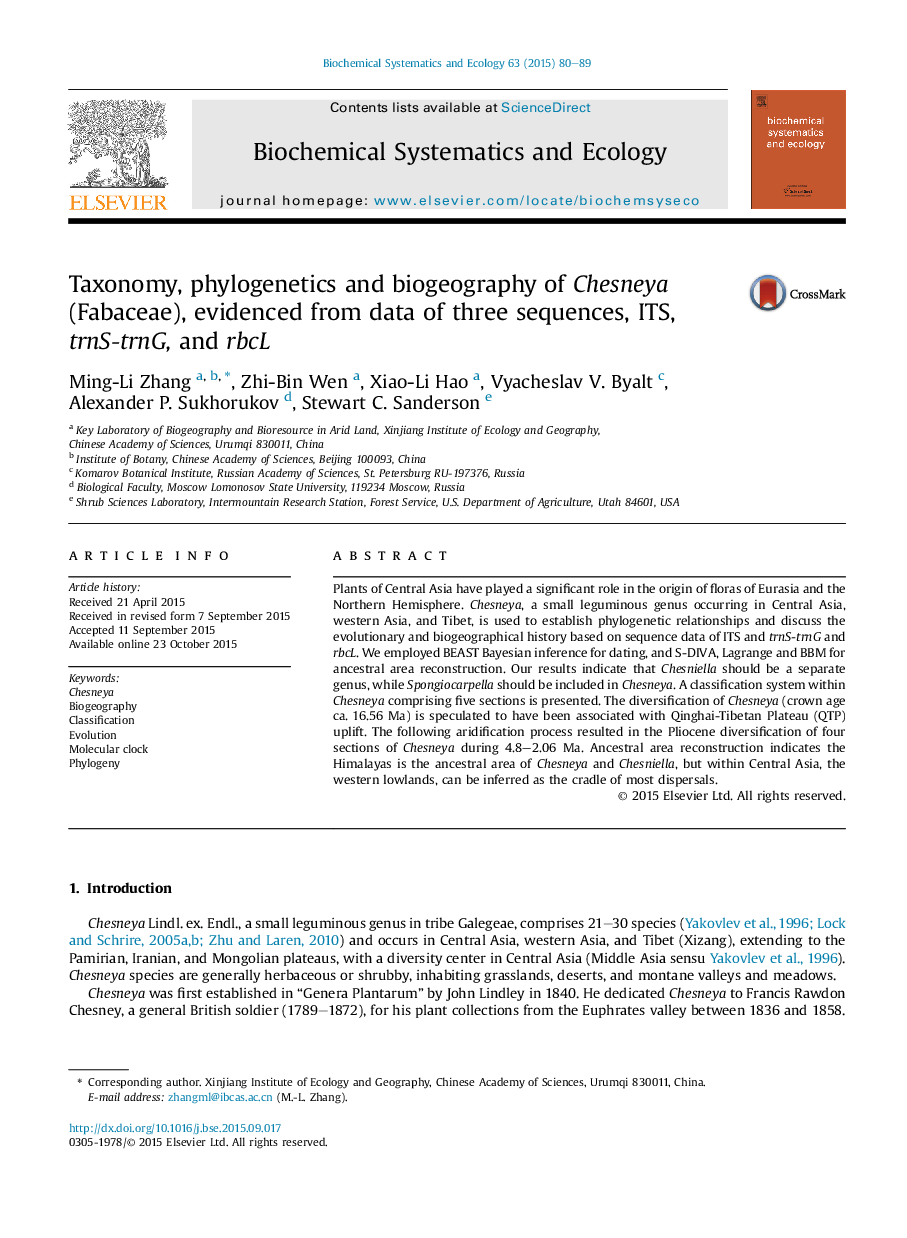| کد مقاله | کد نشریه | سال انتشار | مقاله انگلیسی | نسخه تمام متن |
|---|---|---|---|---|
| 1355185 | 1500403 | 2015 | 10 صفحه PDF | دانلود رایگان |

• Taxonomy, phylogenetics and biogeography of Chesneya (Fabaceae), evidenced from data of three sequences is investigated comprehensively.
• A classification system within Chesneya comprising five sections is presented.
• Diversification of Chesneya (crown age ca. 16.56 Ma) is speculated to have been associated with Qinghai–Tibetan Plateau (QTP) uplift.
• Ancestral area reconstruction indicates the Himalayas is the ancestral area of Chesneya and Chesniella, but within Central Asia, the western lowlands, can be inferred as the cradle of most dispersals.
Plants of Central Asia have played a significant role in the origin of floras of Eurasia and the Northern Hemisphere. Chesneya, a small leguminous genus occurring in Central Asia, western Asia, and Tibet, is used to establish phylogenetic relationships and discuss the evolutionary and biogeographical history based on sequence data of ITS and trnS-trnG and rbcL. We employed BEAST Bayesian inference for dating, and S-DIVA, Lagrange and BBM for ancestral area reconstruction. Our results indicate that Chesniella should be a separate genus, while Spongiocarpella should be included in Chesneya. A classification system within Chesneya comprising five sections is presented. The diversification of Chesneya (crown age ca. 16.56 Ma) is speculated to have been associated with Qinghai-Tibetan Plateau (QTP) uplift. The following aridification process resulted in the Pliocene diversification of four sections of Chesneya during 4.8–2.06 Ma. Ancestral area reconstruction indicates the Himalayas is the ancestral area of Chesneya and Chesniella, but within Central Asia, the western lowlands, can be inferred as the cradle of most dispersals.
Journal: Biochemical Systematics and Ecology - Volume 63, December 2015, Pages 80–89